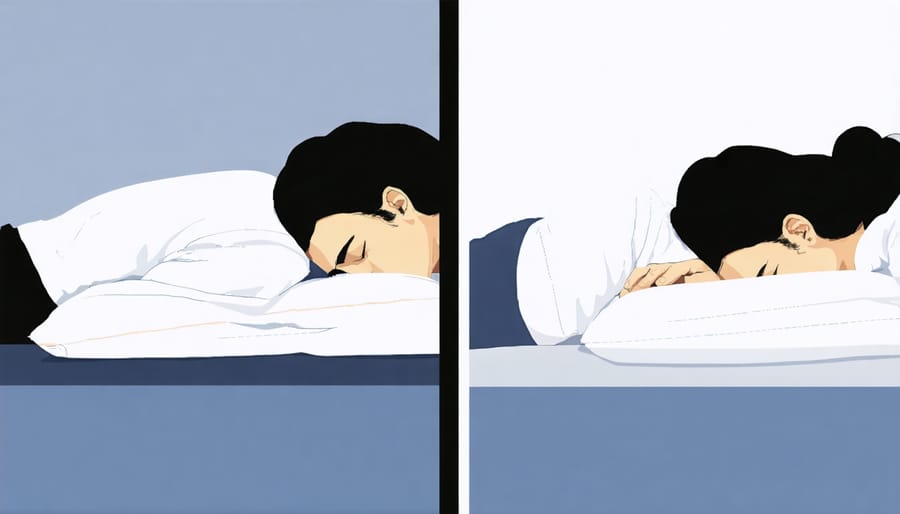The biannual ritual of changing our clocks disrupts more than just our schedules—it fundamentally impacts our body’s natural rhythms and overall health. Research shows that daylight saving time (DST) transitions can trigger a cascade of physical and mental health effects, from disrupted sleep patterns to increased risk of heart problems and mood disorders. When we spring forward or fall back, our internal biological clock, known as the circadian rhythm, struggles to adapt to the artificial time shift. This sudden change affects hormone production, blood pressure regulation, and cognitive function, leading to documented increases in workplace accidents, car crashes, and even hospital admissions in the days following the time change. Understanding these health implications is crucial for Canadians, as our northern latitude makes us particularly susceptible to the effects of shifting daylight patterns. While we can’t avoid DST transitions, being aware of their impact on our well-being allows us to take proactive steps to protect our health during these challenging seasonal changes.
How Your Body Clock Gets Thrown Off Track

Sleep Disruption and Fatigue
One of the most immediate and noticeable effects of Daylight Saving Time (DST) is its impact on our sleep patterns. When we suddenly shift our schedules by an hour, it triggers circadian rhythm disruption, which can leave us feeling groggy and disoriented for days or even weeks.
During the spring transition, when we “lose” an hour, many Canadians report experiencing increased difficulty falling asleep and staying asleep. This sleep debt often results in daytime fatigue, reduced alertness, and decreased cognitive performance. Studies show that in the week following the spring time change, people typically sleep 40 minutes less than usual.
The effects can be particularly challenging for those who already struggle with sleep issues or have strict morning schedules. Parents of young children often find this transition especially difficult, as young bodies tend to be more sensitive to sleep schedule changes. Even seemingly minor sleep disruptions can impact our mood, energy levels, and ability to concentrate throughout the day.
The autumn change, while giving us an “extra” hour, can also disturb sleep patterns as our bodies adjust to the new schedule.
Mood and Mental Health Effects
The transition to and from Daylight Saving Time can have a significant impact on mental well-being, particularly during the first few weeks after the time change. Research shows that the disruption to our circadian rhythm can trigger increased feelings of anxiety, depression, and irritability. Many Canadians report experiencing mood swings and decreased motivation, especially during the fall transition when evenings become darker earlier.
The reduced exposure to natural daylight during winter months following the time change can lead to Seasonal Affective Disorder (SAD) symptoms in some individuals. This can manifest as persistent low mood, difficulty concentrating, and changes in appetite or sleep patterns. The spring transition, while bringing more evening light, can also cause temporary mood disruptions as our bodies adjust to the new schedule.
To support emotional stability during these transitions, experts recommend maintaining consistent daily routines, spending time outdoors during daylight hours, and practicing stress-management techniques. Regular exercise and social connections can also help buffer against the negative emotional effects of the time change.
Physical Health Impacts You Should Know
Cardiovascular Risks
Research shows that the transition to and from Daylight Saving Time can significantly impact cardiovascular health. Studies have found a notable increase in heart attacks during the first few days following the spring time change, particularly on the Monday immediately after. This rise is attributed to the disruption of our body’s natural circadian rhythm and the loss of sleep.
The risk appears to be more pronounced during the spring transition when we lose an hour of sleep. Statistics indicate a 24% higher rate of heart attacks on the Monday following the spring time change compared to other Mondays throughout the year. Conversely, there’s typically a small decrease in heart attacks when we gain an hour in the fall.
Several factors contribute to this increased cardiovascular risk. The sudden shift in sleep patterns can elevate stress hormones and blood pressure, while also affecting blood sugar levels and inflammation markers. These changes can be particularly concerning for individuals who already have underlying heart conditions or other cardiovascular risk factors.
Sleep deprivation, even for just one hour, can lead to increased heart rate, higher blood pressure, and elevated stress hormones, all of which can strain the cardiovascular system. For those with existing heart conditions, this additional stress may be enough to trigger serious cardiac events.
To minimize these risks, experts recommend gradually adjusting your sleep schedule in the days leading up to the time change and maintaining good sleep hygiene practices.

Digestive System Changes
The shift in daylight hours during DST can significantly impact your eating patterns and digestive health. When our internal body clock is disrupted, it affects not just when we feel hungry but also how efficiently our body processes food. Many Canadians report experiencing changes in appetite and digestion during the transition periods.
Research shows that the one-hour time change can alter the release of hunger hormones like ghrelin and leptin. This disruption may lead to increased cravings, particularly for high-calorie and carbohydrate-rich foods, as your body tries to adjust to the new schedule. Some people might find themselves snacking more frequently or eating at unusual times.
Your metabolism also responds to these changes. The body’s natural digestive rhythm relies on consistent timing of meals, and when this timing shifts, it can lead to temporary digestive issues such as bloating, irregular bowel movements, or indigestion. The good news is that these effects are usually temporary, lasting about a week as your body adjusts to the new schedule.
To minimize digestive disruptions during DST transitions, try maintaining regular meal times according to the clock rather than your internal sense of hunger. Stay hydrated, keep portion sizes consistent, and avoid eating large meals close to bedtime. Planning your meals ahead and sticking to a routine can help your digestive system adapt more smoothly to the time change.
Practical Solutions to Protect Your Health

Preparation Strategies
To effectively prepare your body before the time change, start adjusting your sleep schedule gradually about a week before DST begins or ends. Shift your bedtime by 15 minutes each day to help your body adapt more smoothly to the upcoming change.
Create a consistent sleep environment by maintaining a cool, dark bedroom and limiting screen time at least an hour before bed. Consider using blackout curtains or a sleep mask to manage changing light conditions, especially during spring when evenings become brighter.
Establish healthy daytime habits that support your body’s natural rhythm. Get regular exposure to natural daylight, particularly in the morning, to help regulate your internal clock. Engage in moderate exercise, but avoid vigorous workouts close to bedtime.
Watch your diet during the transition period. Limit caffeine intake, especially in the afternoon and evening. Have dinner at least three hours before bedtime, and avoid heavy meals that might disrupt your sleep. Consider incorporating foods rich in melatonin, such as cherries, nuts, and bananas, into your evening routine.
Plan your schedule thoughtfully around the time change. If possible, avoid scheduling important meetings or demanding tasks for the first few days after the shift. Give yourself extra time in the morning to adjust, and consider taking short power naps (15-20 minutes) in the early afternoon if needed.
Remember to maintain these healthy habits even after the initial adjustment period to support your overall sleep health throughout the year.
Recovery Tips
Adjusting to daylight saving time doesn’t have to be a struggle if you follow these evidence-based recovery strategies. Start preparing a few days before the time change by gradually shifting your bedtime by 15-20 minutes each night. This gentle transition helps your body’s circadian rhythm adapt more smoothly.
Create a consistent sleep schedule by going to bed and waking up at the same time every day, even on weekends. Maintain a relaxing bedtime routine that includes dimming lights, avoiding screens, and engaging in calming activities like reading or gentle stretching.
Light exposure plays a crucial role in adjustment. In the morning, seek bright natural light by taking a walk or having breakfast near a window. This helps reset your internal clock and boosts alertness. During the evening, minimize exposure to bright lights and blue light from electronic devices.
Physical activity can help regulate your sleep-wake cycle, but avoid vigorous exercise close to bedtime. Instead, schedule workouts for the morning or early afternoon. Stay well-hydrated and maintain regular meal times, as this helps stabilize your body’s internal rhythms.
If you’re feeling especially tired during the adjustment period, it’s okay to take a short power nap (20 minutes maximum) in the early afternoon. However, avoid long or late-day naps as they can interfere with nighttime sleep.
Consider using blackout curtains to maintain optimal sleeping conditions, especially when dealing with changing daylight hours. If you’re experiencing persistent sleep difficulties, try natural sleep aids like chamomile tea or meditation before turning to medications.
Remember that most people adjust to the time change within a week. Be patient with yourself and maintain these healthy habits to support your body’s adaptation process.
The effects of Daylight Saving Time on our health are significant but manageable with proper preparation and awareness. While the biannual time changes can disrupt our sleep patterns, mood, and cardiovascular health, taking proactive steps can help minimize these impacts. By gradually adjusting your sleep schedule in the days leading up to the time change, maintaining consistent daily routines, and practicing good sleep hygiene, you can better navigate the transition periods.
Remember that DST affects different people in different ways, and it’s essential to pay attention to your body’s signals. If you experience persistent sleep problems, mood changes, or other health concerns during time changes, don’t hesitate to consult with your healthcare provider. They can provide personalized guidance and support.
By understanding the potential health impacts of DST and implementing preventive strategies, you can protect your well-being during these transitions. Stay mindful of your sleep patterns, exercise regularly, maintain a healthy diet, and expose yourself to natural light at appropriate times. These simple yet effective measures can help you maintain optimal health throughout the year, regardless of time changes.

